A malfunctioning electrical system could cause all the lights on your Honda Accord’s dashboard to illuminate. A malfunctioning alternator or charging system most likely causes all your dashboard lights to come on at once.
The dashboard lights on Honda Accords are designed to provide the driver with information about the car’s operation.
These lights come on in response to certain actions, such as turning on the headlights or activating the windshield wipers.
The dashboard also warns when a problem is detected, or a system is malfunctioning. If all the dashboard lights suddenly come on, it could be due to several problems. Check below for some possible causes and solutions.
If all Honda dashboard lights illuminate at once, you should be prepared to take the necessary steps since it indicates something is wrong with the engine.
Your car’s most important parts will last longer if you understand the meaning of dashboard lights.
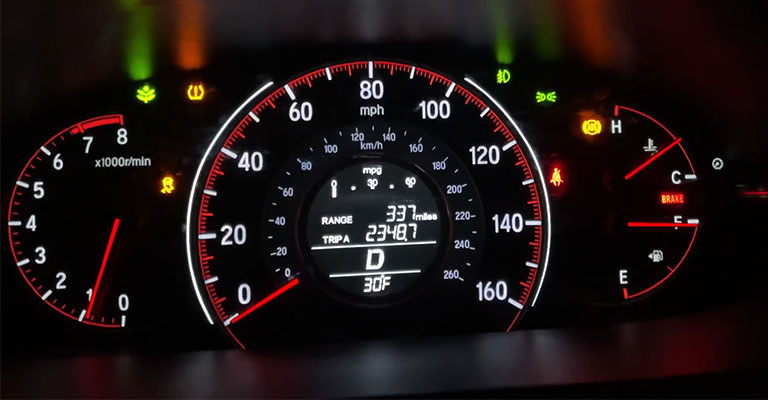
Accord Dashboard Warning Lights: Why You Should Observe Them?
- For the purpose of avoiding unnecessary repair expenditures.
- The sooner you fix your Honda dashboard lights, the less damage you will incur to your car.
- Reduce the amount of money needed to repair or replace damaged vehicle parts.
- Prevents crisis and damage to your engine
- In case of an emergency, it can save your life
- Keeps your car’s brakes, tires, airbags, and ABS from being damaged
Honda Accord Dashboard Lights Suddenly All On Explanation
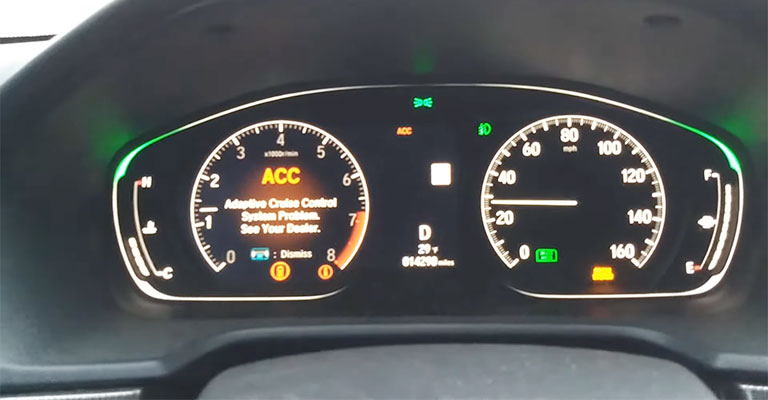
Are all the dashboard lights on your Honda accord turning on at the same time? There could be a serious problem with the battery or alternator on your Honda, which must be addressed as soon as possible.
Furthermore, a driver receives a warning when all dashboard lights are on simultaneously. To prevent the engine and other vital parts of the vehicle from being damaged, you need to take the necessary steps.
For example, a Honda dashboard light observes the traffic light colors system as follows:
Red: You should stop driving immediately and get assistance from an authorized Honda dealer if you see this icon.
Orange or Yellow: This indicates there may be a problem with your system, so you should investigate it as soon as possible.
Blue or Green: You can continue driving as there is no issue with your car’s system.
1. The Starter/Alternator Might Be Malfunctioning
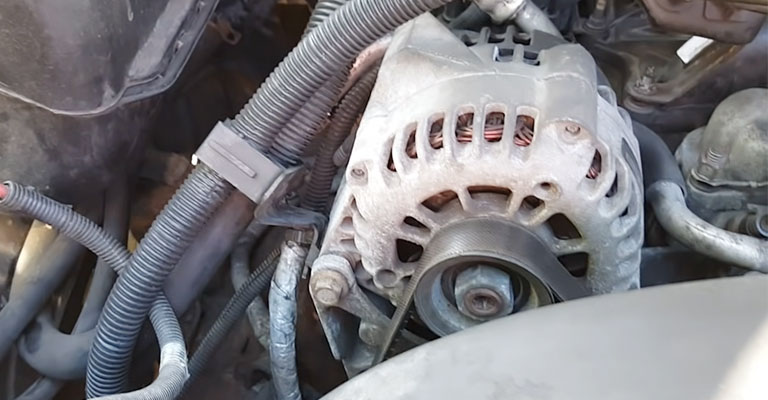
If it is deteriorating, bring it to AutoZone for an inspection. Starter, alternator, and engine grounds should be cleaned.
Connect the battery wire before installing the mount bolts on the alt. With the alt pointing up, it’s much easier to install the nut.
The radiator and alternator are close together after the alternator is bolted on. The upper hose of the power steering reservoir should also be disconnected.
2. There Is A Problem With The Charging System
Check the Main light on your car to see if anything is causing it to illuminate. It is possible that the oil needs to be changed.
It’s most common for the car’s computer to activate the “Maintenance Required” light when it’s time for an oil change. The battery icon light indicates an issue with the charging system.
It is important, however, to check the ECU codes because the car’s computer may trigger this signal. In case it needs to be reset, you can do so.
3. Parking Brake Switches That Are Dirty Or Broken
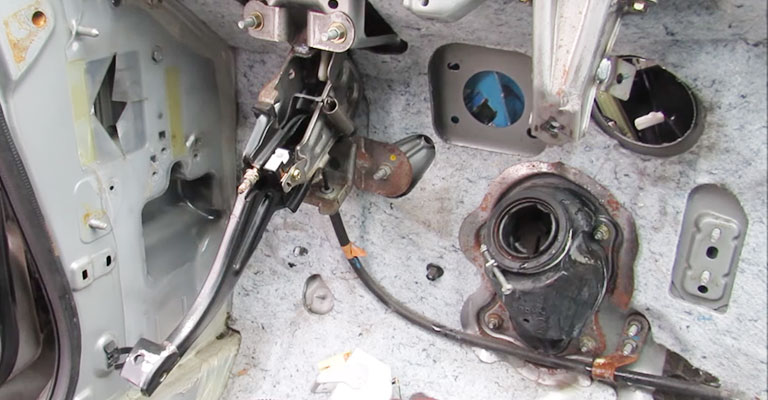
The “Brake” light illuminates when the parking brake is engaged, or the pressurized brake circuit fails. The parking brake light sometimes stays on while the car is operating due to a dirty or broken switch.
The parking brake switch needs to be cleaned or replaced. Before looking for a faulty parking brake switch, make sure the car’s braking system is working properly.
4. Failure Of The Voltage Regulator Or Alternator
The first place to inspect would be the terminals of the automobile battery. There is a possibility that power is to blame whenever dashboard lights suddenly illuminate.
When the engine is running, measure 13.8 to 14.5 VDC across the battery terminals. Ensure the alternator output is working properly by using a voltmeter.
When you’re doing this with the engine running, be sure to keep safety in mind. Make sure the parking brake is applied firmly, and the gearbox is in Neutral (manual transmission) or Park (automatic transmission).
A voltage regulator or alternator malfunctions when the voltage is less than 13.8 VDC. In such a case, you may need to replace the battery and the alternator (with a regulator).
Getting To Know various warning lights on the Honda Accord dashboard
It is common for Honda dashboards to display multiple warning lights which indicate different meanings to the driver. Below you will find a list of warning lights, their definitions, causes, and how to fix them.
1. Warning Light For Brake System

Due to insufficient brake fluid, this warning light indicates that the system isn’t working properly. It is therefore impossible for the driver to use the brakes in an emergency situation.
The Causes
- Control unit malfunctioning
- The pump is faulty
- There is a problem with the solenoid
- The speed sensor has been damaged
- There is not enough fluid
How To Fix The Brake System Warning Light
- Find out why the warning light is on
- Make sure your vehicle is in good working order by taking it to a mechanic
- After turning on the ignition, if the dashboard lights do not clear, replace the burned-out bulb.
2. CEL (Check Engine Light)

There is a problem with a particular part in your Honda car that is causing this warning light to illuminate.
Reasons
- Air is being released with unbalanced oxygen due to a faulty emission system, such as an oxygen sensor
- The ignition system is defective, resulting in improper fuel combustion
- A poorly installed mass air flow sensor allows foreign particles to enter, causing the engine to malfunction
- An air leak between the diesel tank and the filter cap is caused by a loose diesel filter cap
- An obstruction in the diesel particulate filter
Check Engine Warning Light Fix
- Determine what caused the light to appear
- Make sure the oil pressure and temperature gauges on your Honda dashboard are working properly.
- Tighten the gas cap and reduce the speed
- If the above step does not work, have your Honda serviced
3. Tire Pressure Warning Light
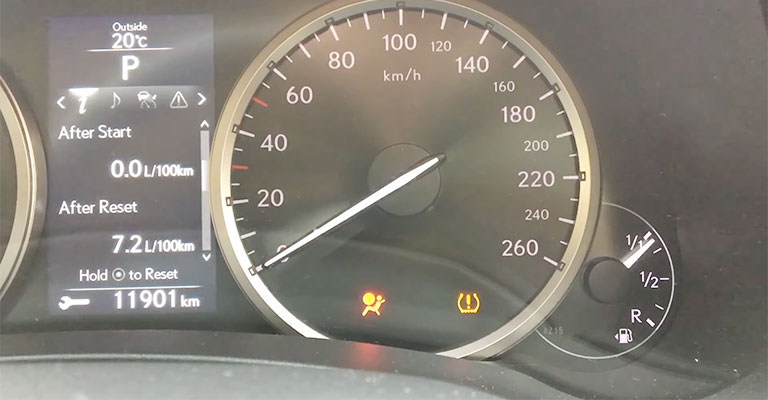
Tires are inflated due to shallow tire pressure, resulting in this warning light.
The Causes
- Tires inflated due to leakage
- Overinflated tires wear out faster
When The Tyre Pressure Warning Light Comes On, Here’s What You Need To Do To Fix It.
- To check the pressure in your Honda, use a pressure gauge.
- Prevent quick wear and tear on your car tires by checking them periodically.
4. A Warning Light Appears When The Battery Is Charging
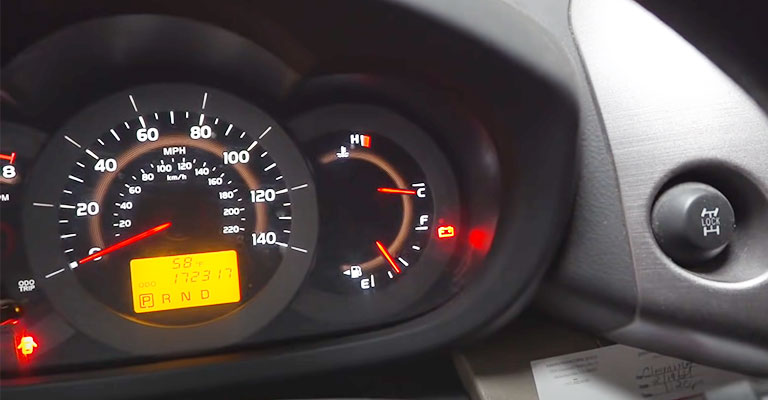
There is a problem recharging the battery when there is a Math Lego symbol for Battery Charging Warning Light.
Factors
- The alternator belt is broken
- An alternator’s operation is hindered by corrosion of the battery terminals, which prevents electricity from flowing properly.
- Loose battery cable causes improper charging
When The Battery Charging Warning Light Appears, Follow These Steps To Fix It
- If you see a light on your dashboard, ensure your battery is charged, since the battery supplies power to the radio, headlights, and ignition.
- Check the battery of your Honda car at the service center.
5. Warning Light For Engine Oil Pressure
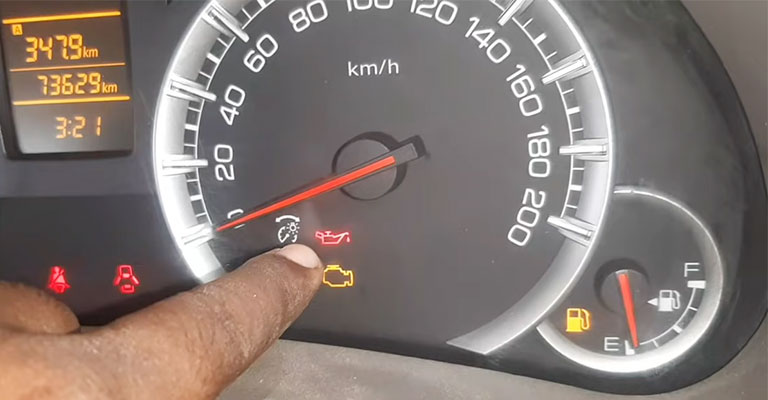
If you see this Warning light, there is insufficient oil in the engine due to leakage or evaporation. As a result, there is insufficient circulation of fluids from the oil pump (which helps lubricate the vehicle’s surfaces).
The lubricant is starved of lubricant when the oil filter is clogged. In addition, there is a problem with the sensing unit.
Here Are Some Steps To Follow When The Engine Oil Pressure Warning Light Comes On.
- Make sure your Honda’s oil is full.
- Oil should be changed if the oil level is low.
- The oil should be changed every 5000-7000 miles for systematic oil and every 3000-5000 miles for conventional oil.
- The vehicle should be taken to a mechanic or service center if all the above steps do not help
6. Warning Light For Temperature
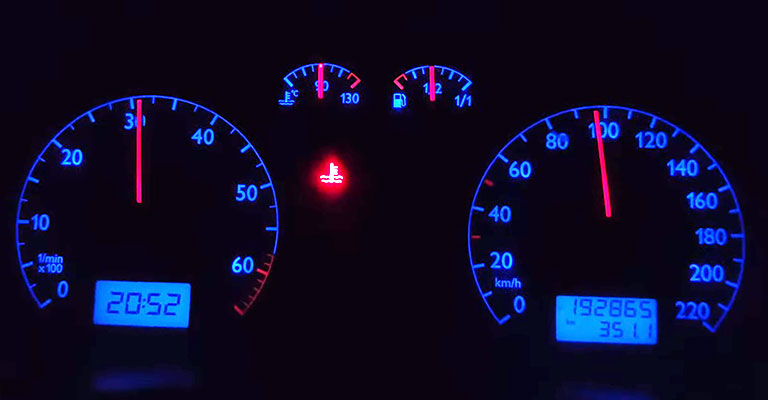
Using the vehicle for longer than necessary is causing the engine to overheat. Whenever there is a leak in the system, air forms a bubble shape, preventing coolant from flowing to the engine, resulting in the radiator dropping coolant and the light turning on.
In colder seasons, when temperatures fall below freezing, low-quality coolants prevent the cooling system from functioning properly. It is impossible for liquid to flow to the radiator when foreign materials and dirt are present.
What You Need To Do When You See The Engine Temperature Warning Light:
- Park the vehicle on the side of the road.
- During a hot engine situation, you should not open the radiator; instead, stop the engine and open the bonnet to allow it to cool.
Overheating Engines Can Be Caused By A Number Of Factors
- When the engine has cooled down, slowly open the radiator cap to check the antifreeze level and see if there are any leaks.
- You can take your vehicle to the mechanic if none of these methods work.
Honda Accord Dash Lights: How Do You Reset Them?
You need to know how to reset the dash lights if you regularly do car maintenance yourself. Once you understand how to do it, it’s a quick and easy process.
To reset the dash lights on a Honda Accord, follow these steps:
- Start your car by turning the key
- Under the odometer is a reset button. Press it and hold it for a few seconds
- Turn on the ignition but don’t start the vehicle while holding the button
- Press and hold the button until the light goes out
- Ensure that the vehicle is turned off
- Ensure the lights have been turned off by waiting about a minute before starting the engine
Always Check Your Honda Accord’s Dashboard Lights
ECUs, or electronic control units, are installed in nearly all modern automobiles for safety, fuel efficiency, and reliability reasons. Honda Accord dashboard lights are designed to help you learn more about your vehicle’s current status.
In these tests, specific components under the hood are revealed to have been severely damaged or are no longer functioning correctly. Additionally, it helps you determine when professional repairs are necessary.
In the event of a malfunction, strategically installed sensors transmit information to the vehicle’s ECU, which then informs the driver.
The dashboard warning lights regularly inform the driver of this information. These lights, or symbols, may also flash other messages to assist the driver in identifying the problem.
The Bottom Line
The warning dashboard lights on our cars can make us nervous and cause us to visit the mechanic more often. Unfortunately, it is not uncommon for people to ignore these warnings until they suffer a breakdown.
Despite their small size, warning lights are crucial to understanding. For example, you’ll receive a warning light on your dashboard if one or more of your vehicle’s systems break down.
When minor issues are ignored, they may escalate into more costly fixes. So make sure you pay attention to your dashboard and don’t ignore the warnings.

Leave a Reply